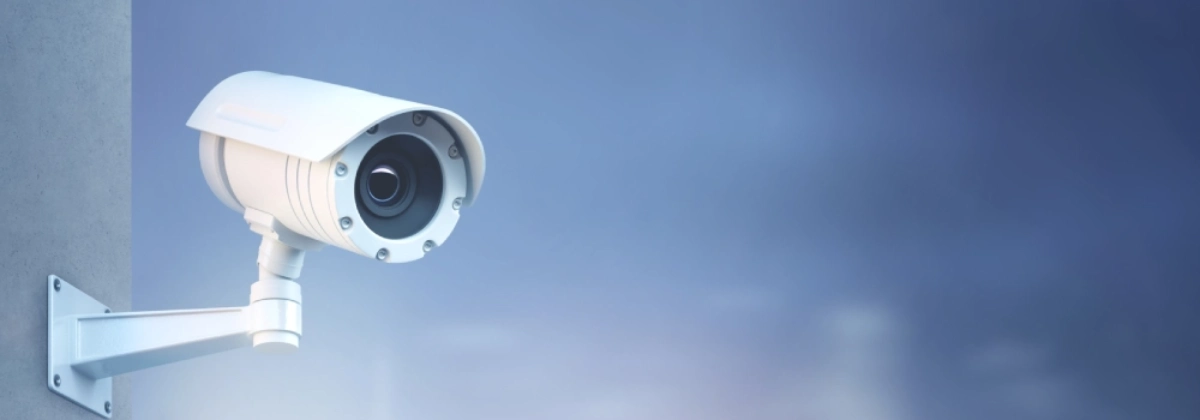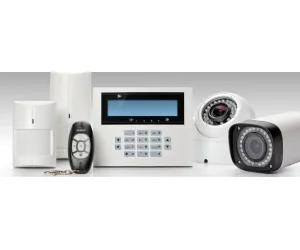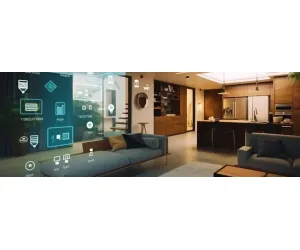
CCTV, short for Closed-Circuit Television, refers to video surveillance systems. The term "closed-circuit" indicates that broadcasts are sent to a limited set of monitors rather than being openly broadcast to the public like traditional television. CCTV is widely used to monitor and deter criminal activities, document traffic violations, and serve various other purposes.
CCTV technology originated in 1942 when German scientists used it to observe V2 rocket launches. Later, American scientists adopted it during atomic bomb testing.
Applications of CCTV
1. Crime Management
CCTV acts as a deterrent to potential criminals. When crimes occur, recorded footage assists law enforcement in investigations and serves as evidence in legal proceedings. Additional technologies like audio, thermal, and motion sensors can work alongside CCTV to detect unusual activities such as fires or gunshots. In businesses, CCTV can monitor in-house criminal behavior, while prisons use it to prevent contraband deliveries via drones.
2. Disaster Management
Emergency responders use CCTV to monitor events in real-time, offering situational insights during crises, such as fires or natural disasters. For example, it can provide live footage from challenging locations like inside burning buildings or remote areas.
3. City and Street Monitoring
CCTV is integral to traffic management, gathering data, and capturing evidence of violations like speeding. Advanced systems, such as Chicago's AoT (Array of Things), integrate cameras to collect environmental data while respecting privacy regulations.
4. Medical Monitoring
Smart CCTV systems can recognize facial expressions linked to pain or anxiety, enabling early diagnosis of medical conditions. They can also monitor patients, such as children or the elderly, for potential emergencies like strokes or seizures.
5. Behavioral Research
Researchers use CCTV to study behaviors, such as identifying signs of potential suicides or monitoring crowd dynamics. Schools also deploy surveillance to ensure security and address incidents like bullying.
6. Retail Intelligence
CCTV aids in analyzing customer behavior, offering insights into shopping patterns, preferred store layouts, and peak traffic times. This data helps optimize staffing, promotions, and store organization.
How CCTV Works
Modern CCTV systems can be analog, digital, or IP-based. While analog and digital systems differ fundamentally, modern setups often include retrofitting tools to convert analog systems to digital.
Components of a CCTV System:
- Cameras (Analog or Digital): Equipped with lenses and image sensors to capture footage.
- Recorder: DVR for analog systems, NVR for digital setups.
- Cables: Coaxial for analog, RJ45 for digital systems.
- Monitors: Display transmitted images.
Cameras capture footage and transmit it to recorders, either wirelessly or via cables. Advanced systems incorporate Video Management Software (VMS) for real-time analysis, motion detection, face recognition, and more.
Types of CCTV Systems
1. Analog
- Transmits video signals via coaxial cables using BNC connectors.
- Cost-effective but limited in resolution.
- Supports digitization for integration with modern systems.
2. Digital
- Converts signals at the camera level, eliminating the need for video capture cards.
- Requires significant storage but offers better image quality.
3. Network/IP
- Streams footage online, enabling WiFi, remote access, and advanced analytics.
- Supports multiple camera integrations for broader coverage.
Key CCTV Technologies
- Video Encoders: Bridge analog systems with network capabilities.
- Image Sensors: Convert light into electronic signals using CMOS or CCD technology.
- Scanning Methods: Interlaced scanning is common for analog systems, while digital systems often use progressive scanning.
Pros and Cons of CCTV Systems
Network CCTV
- Pros: Enables remote monitoring, highly mobile, supports automation.
- Cons: Expensive, requires expertise, and is vulnerable to hacking.
Analog CCTV
- Pros: Affordable and easy to install.
- Cons: Limited resolution and lacks data encryption.
Challenges and Criticisms
While CCTV enhances security, it faces criticisms for intruding on privacy and operational inefficiencies, such as poor equipment quality or lack of training. Privacy concerns can be mitigated using network monitoring tools to comply with regulations.
The Future of CCTV
The future lies in integrating technologies like facial recognition, IoT, drones, and police body cameras. These advancements aim to create a more autonomous and proactive surveillance system. However, widespread adoption may raise concerns about mass surveillance and data privacy.
Monitoring CCTV Networks
Network monitoring software ensures consistent system performance, detects failures, and complies with privacy regulations. Professional monitoring is crucial for handling large volumes of image data efficiently.
CCTV continues to evolve, promising better security and data insights while addressing privacy and operational challenges.







